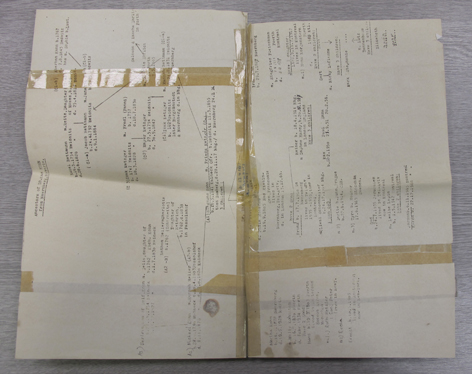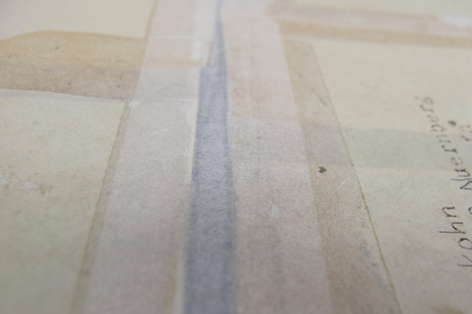Family tree
In the past few years I have noticed a series of television programs where British ‘personalities’ dig around their past and try and find out a little bit more about where they come from. I am hopeful these programs have triggered off people’s interest in not only archives but in what they can offer in terms of finding out more about our collective pasts – whether it be researching at a local records offices for clues about your personal family history or looking into the backrounds and stories behind designers and other professionals whose archives are dotted around the world.
Here at the Design Archives we hold not only materials from organisations but also individual designers. Most of the time the researchers we get through our doors are looking at these archives from an ‘outsider’ point of view. This means that it is sometimes easy to forget that the families of these individuals can still be very much alive – and that we are looking after a part of their family history.
Two family members of FHK Henrion came for a visit recently to have a look around and to get more of a feel of what his archive holds within it. On their visit, they came across a family tree of which they requested a digitised version for their own use.

These family tree documents came in the form of two separate items, both of which consisted of 2-4 individual pieces of paper put together with adhesive tape to form a larger, asymmetrical object. The documents were boxed up folded in Henrion’s archive and presented a nice little conservation challenge for me.

First thing to do was to gently unfold the items. As you can see from the image above, the tape had started to discolour itself and the paper below it. These ‘repair’ tapes were present in both the recto and the verso of the items. The pieces of paper held together did not have straight edges, which meant the tape was filling in the gaps in the seams.

I wish I had measured the amount of tape I ended up removing from the two objects, as it was a fair amount! Parts of the adhesive had become brittle over time, but the majority of them were still very sticky and needed to be carefully removed trying not to take any of the paper fibres along for the ride.

I have been doing a fair amount of adhesive removals on the materials we have here and thankfully so far the papers I have dealt with have been relatively strong and robust. This has meant that the removal has been, in some respects, easier.

As I have mentioned before there is not much that can be done about the discolouration these adhesive tapes cause on the objects.


After tape removal and surface cleaning, the challenge was to put the pieces back together again identically to how they were before any treatments. Below you can see an example of a way in which both of Henrion’s family tree items I worked on were put together – almost like little pieces of a puzzle symbolising the way in which our family trees are built over time.

A good method for putting it all back together again was to use heat set tissue. This lens tissue is a repair material that uses a dry method of application rather than more traditional aqueous methods. The tissue is a pH neutral, pure cellulose material that is coated on one side with an acrylic resin that acts as a ‘sticky’ when the tissue is heated. For localised repairs, a tacking iron is used for this purpose. Heat needs to be applied either through a piece of terylene or silicone release paper to avoid blocking.
Ideally all repairs should take place in the verso of an object to avoid visibility. Because the edges of the pieces of these family trees to be re-fitted together were not straight, I needed to use the heat set tissue on both the verso and the recto of the object to avoid sticky areas present on it post-repair. At the verso of the piece, a wider repair tissue could be used.

On the recto, I used a narrower piece of heat set tissue to make sure the separated pieces were securely re-attached. In some places, the repair was placed over areas with text. Due to the nature of the tissue it can also be used in this manner as it does not hinder the legibility of areas that still need to be visible.

After I scanned them for the family members to use, the repaired objects were placed in separate secol pockets and housed back in the archive for future researchers to stumble upon.

